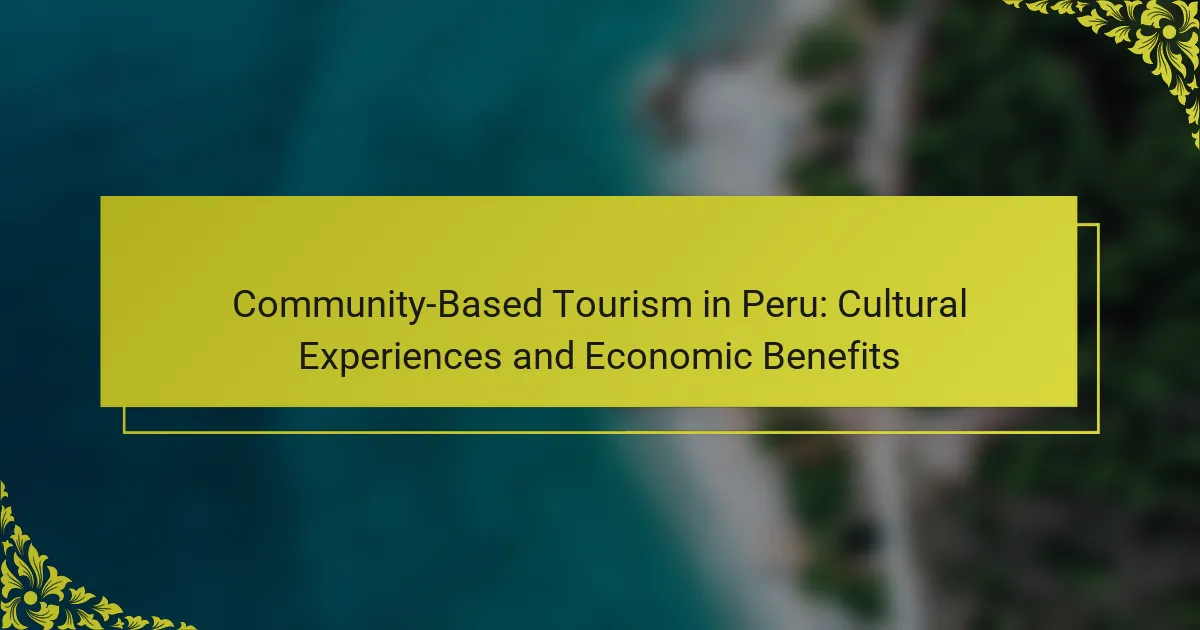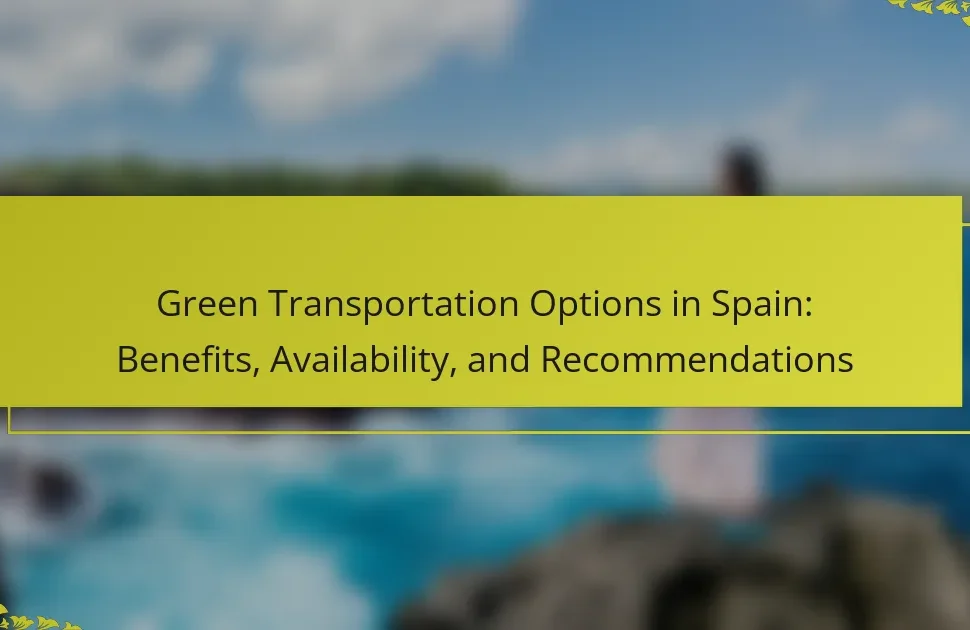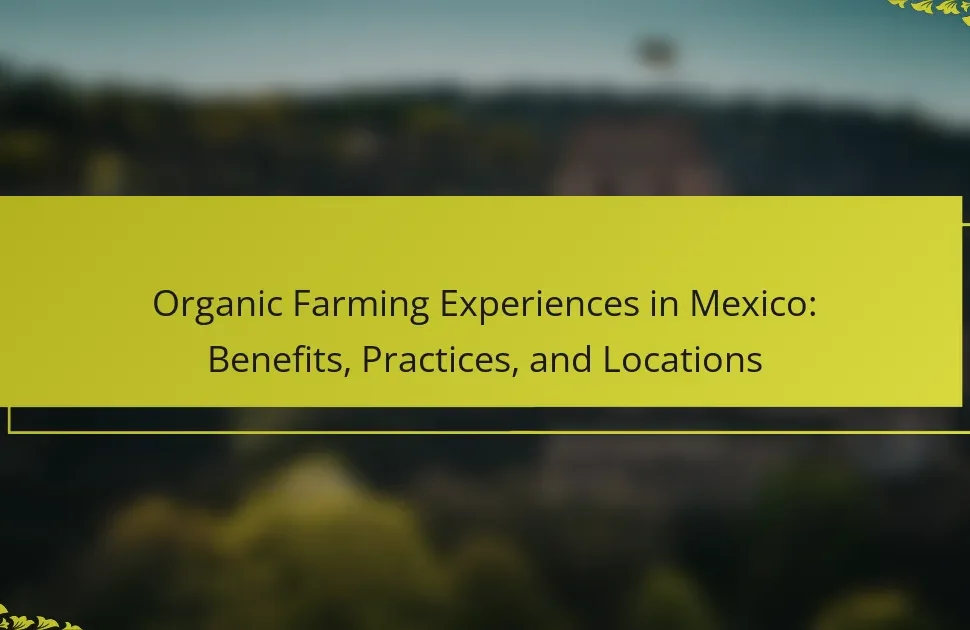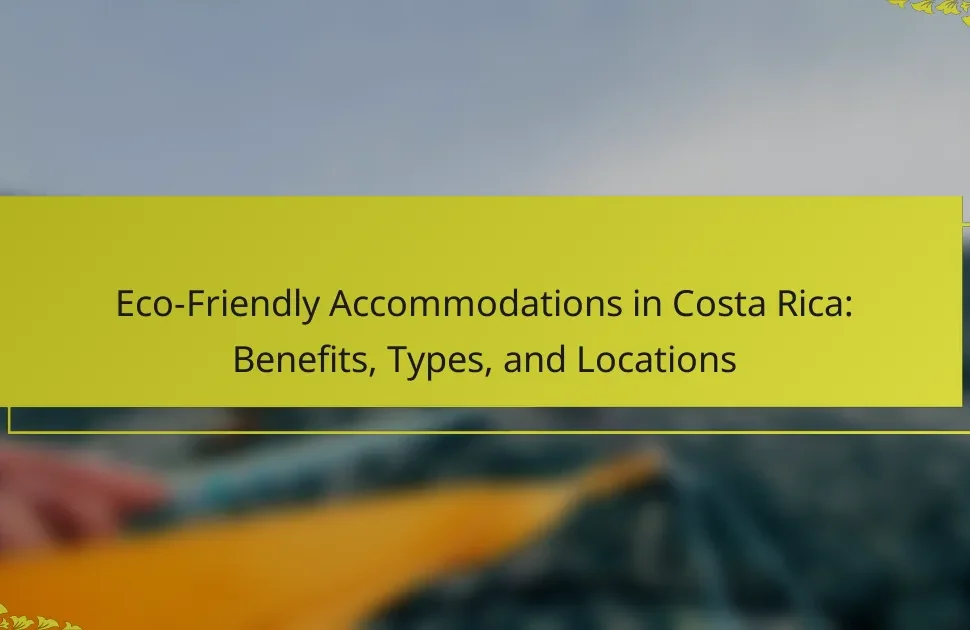Community-Based Tourism in Peru offers travelers immersive cultural experiences while empowering local communities economically. This model fosters authentic interactions, supports sustainable practices, and preserves cultural heritage. Visitors can engage in traditional activities, such as weaving and cooking classes, while contributing to local economies. However, challenges like limited infrastructure and financial constraints must be addressed to enhance the benefits of this tourism approach.
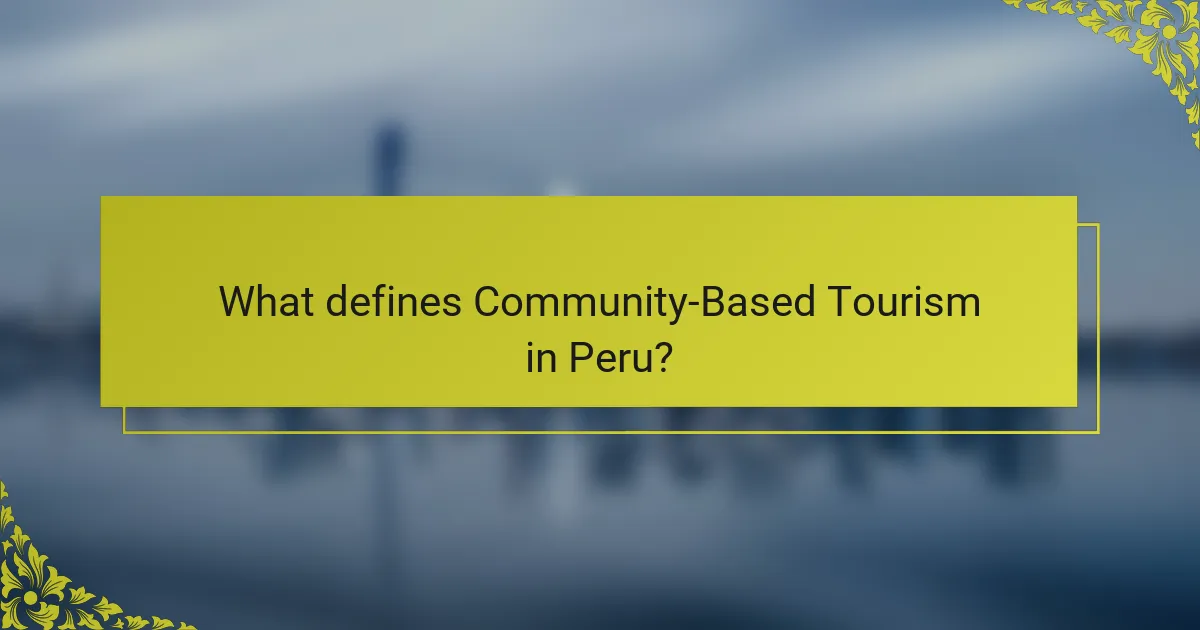
What defines Community-Based Tourism in Peru?
Community-Based Tourism in Peru focuses on immersive cultural experiences and economic empowerment for local communities. This tourism model fosters authentic interactions between visitors and residents, enhancing cultural exchange. It supports sustainable practices, ensuring that tourism benefits local economies directly. For instance, communities often manage accommodations and tours, retaining a significant portion of the revenue. This approach not only preserves cultural heritage but also fosters community development, making it a unique attribute of Peru’s tourism landscape.
How does Community-Based Tourism enhance local cultures?
Community-Based Tourism enhances local cultures by promoting cultural exchange and preserving traditions. This tourism model empowers local communities, allowing them to share their heritage with visitors. As a result, it fosters pride among residents and encourages the continuation of traditional practices. Additionally, it provides economic benefits, enabling communities to invest in cultural preservation and infrastructure. This symbiotic relationship enriches both tourists and locals, creating a sustainable cultural ecosystem.
What are the economic impacts of Community-Based Tourism on local communities?
Community-Based Tourism positively impacts local communities in Peru by enhancing economic stability and creating job opportunities. This tourism model fosters direct financial benefits, as local guides and artisans receive income from visitors.
Additionally, it encourages sustainable practices, preserving cultural heritage while generating revenue. Studies indicate that communities engaged in this tourism model see a significant increase in local business growth, with some areas reporting up to a 30% rise in household income.
Moreover, Community-Based Tourism promotes community development through infrastructure improvements, such as better roads and facilities, benefiting residents. By empowering locals, it fosters a sense of ownership and pride, contributing to social cohesion.
In summary, Community-Based Tourism in Peru not only provides economic benefits but also strengthens community bonds and cultural identity.

Which cultural experiences are unique to Community-Based Tourism in Peru?
Community-Based Tourism in Peru offers unique cultural experiences that connect travelers with local traditions. Visitors engage in authentic activities such as traditional weaving, cooking classes, and community festivals. These experiences foster cultural exchange and provide economic benefits to local communities. For instance, tourists can participate in the Inti Raymi festival, celebrating Inca heritage, or learn about medicinal plants from local shamans. Such interactions not only enhance understanding of Peruvian culture but also support sustainable tourism practices.
What role do local artisans play in Community-Based Tourism?
Local artisans play a crucial role in Community-Based Tourism by providing authentic cultural experiences and supporting local economies. They create unique handmade products that reflect traditional craftsmanship, enhancing visitors’ understanding of local heritage. This engagement fosters economic opportunities for artisans, increasing their income and preserving their cultural identity. Additionally, tourists benefit from personalized interactions, deepening their connection to the community. Overall, artisans are vital in promoting sustainable tourism while enriching cultural exchange.
How do traditional festivals contribute to the tourism experience?
Traditional festivals significantly enhance the tourism experience by offering authentic cultural interactions. These events showcase local customs, art, and cuisine, attracting visitors seeking immersive experiences. Festivals often stimulate local economies through increased visitor spending on accommodations, food, and crafts. Furthermore, they foster community pride and cultural preservation, enriching both tourists and residents. Engaging with traditional festivals allows tourists to connect deeply with Peru’s diverse heritage, making their visit memorable and impactful.
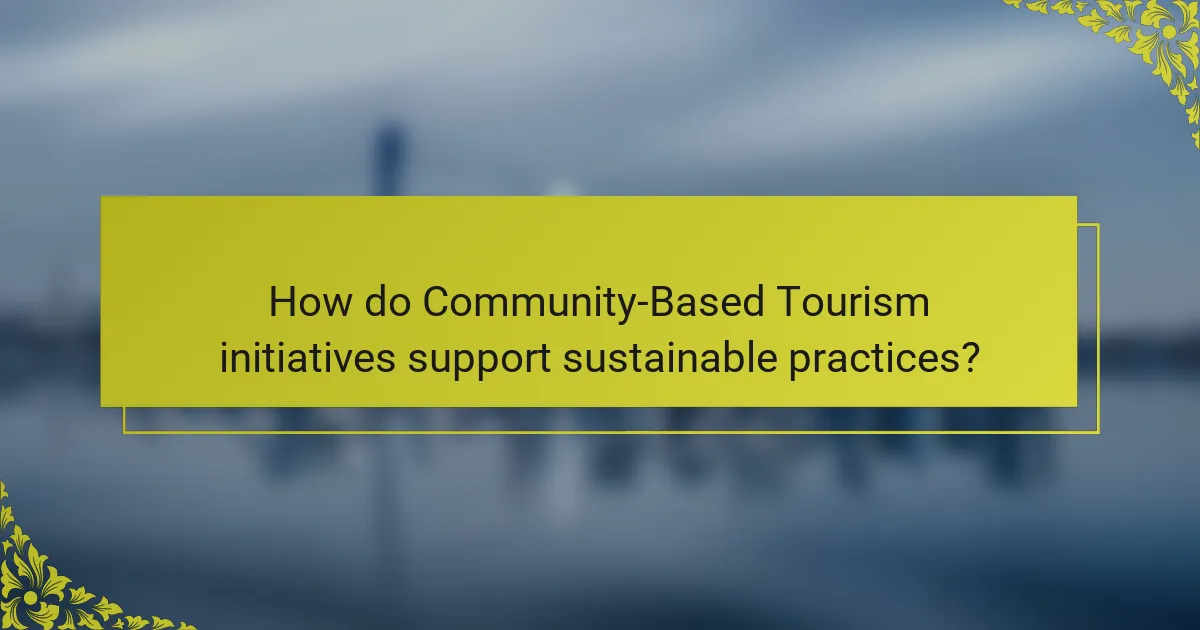
How do Community-Based Tourism initiatives support sustainable practices?
Community-Based Tourism initiatives in Peru support sustainable practices by promoting local culture and generating economic benefits for communities. These initiatives encourage environmental conservation through responsible tourism, ensuring that natural resources are preserved. Local involvement fosters cultural exchange, enhancing community pride and awareness. Economic benefits include job creation and income diversification, which help reduce poverty and improve living standards. As a result, Community-Based Tourism aligns with sustainable development goals by balancing economic growth and environmental protection.
What are the environmental benefits of Community-Based Tourism?
Community-Based Tourism in Peru offers significant environmental benefits by promoting conservation and sustainable practices. It encourages the protection of natural resources, as local communities engage in preserving their ecosystems to attract tourists.
This form of tourism reduces the ecological footprint compared to mass tourism. Local initiatives often implement waste management and biodiversity conservation programs, fostering a harmonious relationship between tourism and the environment.
Additionally, Community-Based Tourism supports the use of renewable resources, such as solar energy, further minimizing environmental impact. By prioritizing local culture and nature, it creates economic incentives for communities to maintain their surroundings.
As a result, Community-Based Tourism not only enriches cultural experiences but also contributes to the sustainability of Peru’s diverse ecosystems.
How does Community-Based Tourism promote conservation efforts?
Community-Based Tourism in Peru promotes conservation efforts by engaging local communities in sustainable practices. This model fosters environmental stewardship, as residents directly benefit from preserving their natural resources. Economic incentives motivate locals to protect biodiversity and cultural heritage. Collaborative projects often include reforestation and wildlife protection, enhancing ecosystem resilience. As a result, tourism becomes a tool for conservation, creating a symbiotic relationship between economic growth and environmental sustainability.
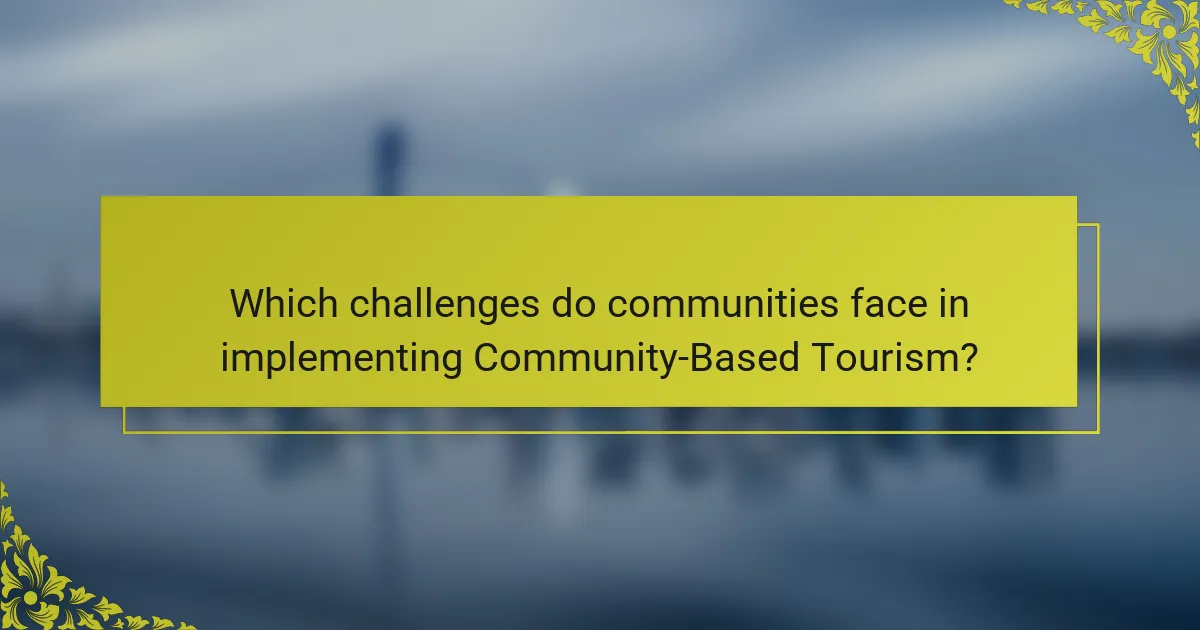
Which challenges do communities face in implementing Community-Based Tourism?
Communities face several challenges in implementing Community-Based Tourism (CBT) in Peru. Limited infrastructure hinders accessibility to remote areas. Insufficient training for local guides affects service quality. Cultural misunderstandings can lead to conflicts between tourists and residents. Additionally, financial constraints restrict investment in sustainable practices. Finally, balancing community needs with tourist expectations remains a complex issue.
What are the common barriers to entry for local entrepreneurs?
Local entrepreneurs in Peru face several common barriers to entry in community-based tourism. Limited access to funding restricts initial investment. Regulatory hurdles can complicate business setup. Lack of marketing knowledge hampers visibility. Additionally, insufficient infrastructure affects service delivery. Cultural misunderstandings may also deter tourists, impacting economic benefits.
How can communities overcome issues related to infrastructure?
Communities can overcome infrastructure issues by leveraging community-based tourism initiatives. These initiatives enhance local engagement and promote sustainable economic growth while addressing infrastructure needs.
Community-based tourism in Peru fosters collaboration among residents, local governments, and tourists. This collaboration can lead to improved transportation, sanitation, and public facilities. As a result, local economies benefit from increased visitor spending, which can be reinvested into critical infrastructure.
Additionally, cultural experiences offered through this tourism model raise awareness about local needs. Tourists often contribute to funding for community projects, creating a cycle of investment that strengthens infrastructure over time.
In summary, community-based tourism not only enriches cultural experiences but also serves as a catalyst for addressing infrastructure challenges in local communities.

What are the best practices for travelers engaging in Community-Based Tourism?
Travelers engaging in Community-Based Tourism in Peru should prioritize respectful interaction, support local economies, and embrace cultural learning.
1. Engage with local communities: Build relationships with residents to understand their culture and traditions.
2. Support local businesses: Choose locally-owned accommodations, restaurants, and guides to ensure economic benefits reach the community.
3. Participate in cultural activities: Join workshops or events that showcase local crafts, music, and cuisine to deepen your experience.
4. Practice responsible tourism: Minimize environmental impact by following guidelines and respecting natural resources.
5. Share your experiences: Promote positive stories about local communities to encourage sustainable tourism practices.
How can travelers ensure they are supporting local economies?
Travelers can support local economies by engaging in community-based tourism initiatives. These experiences foster direct interactions with local cultures and provide financial benefits to residents.
Choosing locally-owned accommodations and dining options ensures that funds remain within the community. Participating in guided tours led by local experts enhances cultural exchange while generating income for families.
Purchasing handmade crafts and products from local artisans directly contributes to their livelihoods. Additionally, volunteering for community projects can create lasting positive impacts on local infrastructure and services.
Overall, conscious travel choices promote sustainable economic growth and cultural preservation in Peru.
What etiquette should travelers follow when participating in cultural experiences?
Travelers should respect local customs, engage with communities authentically, and prioritize sustainable practices. Understanding cultural norms enhances the experience and fosters positive relationships.
1. Research local traditions before visiting.
2. Ask for permission before taking photos of people or sacred sites.
3. Participate in activities actively, showing genuine interest.
4. Support local artisans by purchasing handmade goods.
5. Be mindful of dress codes, especially in religious sites.
6. Leave no trace; respect the environment and community spaces.
What common mistakes should travelers avoid in Community-Based Tourism?
Travelers should avoid common mistakes in Community-Based Tourism to enhance their experience. Key mistakes include not respecting local customs, over-commercializing experiences, failing to engage with the community, and neglecting environmental sustainability. Respecting traditions fosters mutual understanding. Over-commercialization can dilute authentic cultural experiences. Engaging with locals enriches the trip and promotes economic benefits. Lastly, prioritizing sustainability ensures the community thrives long-term.
